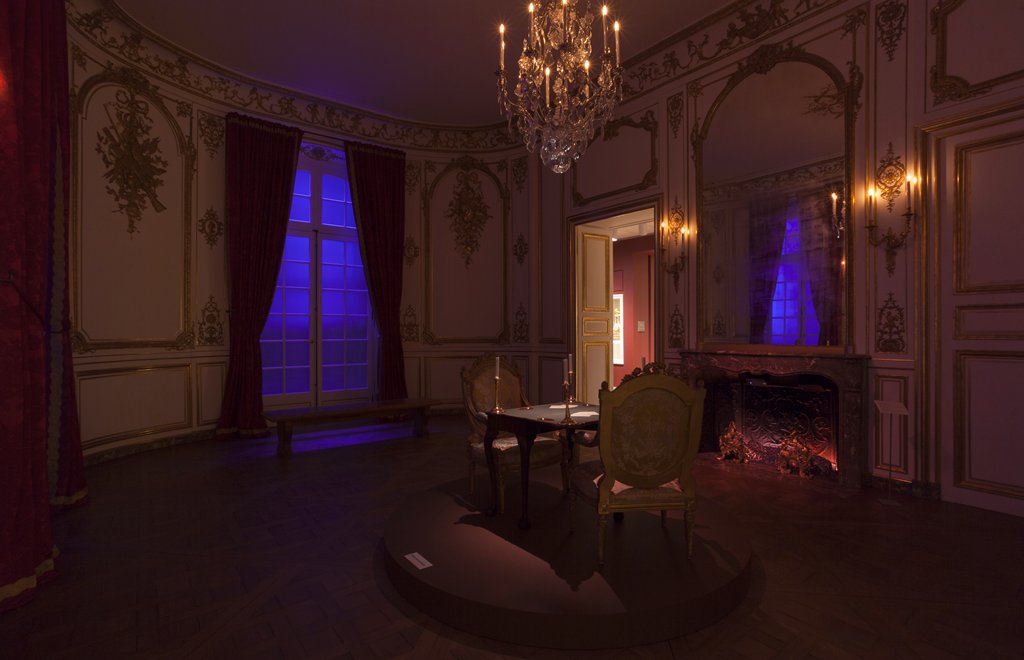
Living Rooms: Current Projects
Turkish Rugs on Tudor Walls: 16th-Century Trade between England and the Islamic World

Five hundred years ago, the Islamic world ruled much of North Africa, Persia, and Eastern Europe. Protestant Christian England, newly estranged from Catholic Europe, forged lucrative trade, diplomatic, and cultural relations with these Muslim global powers. By the late 1500s, few prosperous English homes lacked a Turkey carpet, silks, ceramics, or tapestries. These goods, as well as domestically produced versions of them, later found their way into English daily life. Yet, as much as the English admired the sumptuous wares, the tiny, isolated island nation wrestled over doing business with a people it deemed “heathen.” This exhibition examines that fundamental attraction and ambivalence.
Read More
Life at the Edge of Empire: North America, c. 1760–1812

For North Americans living in the late 1700s and early 1800s—whether free or enslaved, Native American or of African or European descent—life was impacted by a common set of historical forces, albeit in very different ways. The experiences of territorial conflict, international diplomacy, trade, and shifting national identities are explored through the artworks and furnishings installed in the 1772 Charleston Dining and Drawing Rooms, from the home of John Stuart, the superintendent of Indian Affairs for Britain’s southern colonies in North America.
Read More
Just Imported: Global Trade in 1700s New England
The Providence Parlor once occupied prime real estate on a wharf in 1700s Providence, Rhode Island. Its owners, brothers Joseph and William Russell, operated a prosperous merchant business that imported and exported goods by sea. Their store, The Sign of the Golden Eagle, offered a resplendent selection of imported fabrics, exotic spices, fine housewares, and hogsheads of rum, among other goods. Their market was the world, and the world, their market, made possible by trade winds, war profiteering, and the labor of enslaved people.
With their wealth, the Russell Brothers built the first three-story home in Providence, with views of the harbor. Originally installed at Mia in 1923, the parlor, along with its original inhabitants and harborside location, is brought back to life through a naturalistic soundscape, multi-sensory discovery cabinet of mercantile curios, and animated shadow puppets.
Read More
Up All Night in the 1700s
In the 1700s, European cities witnessed a gradual but profound shift in daily life: people stayed up later and partied harder into the night. Many of their nocturnal soirees were private affairs, hosted in elite homes by invitation only. The Grand Salon from the Hôtel de la Bouëxière will be prepped for one of these exclusive parties with a games table for card-playing (the night-loving aristocrat’s favorite diversion), candlesticks, and the required stimulants: coffee and chocolate. Of course, staying up late meant burning the midnight oil, so artificial lighting with candles and fire increased in importance during this time. New lighting in the Salon simulates the effects of flickering flames, revealing the warm glow of gilded paneling and metalwork in a “nighttime” setting.
Read More
Turkish Rugs on Tudor Walls: 16th-Century Trade between England and the Islamic World

Five hundred years ago, the Islamic world ruled much of North Africa, Persia, and Eastern Europe. Protestant Christian England, newly estranged from Catholic Europe, forged lucrative trade, diplomatic, and cultural relations with these Muslim global powers. By the late 1500s, few prosperous English homes lacked a Turkey carpet, silks, ceramics, or tapestries. These goods, as well as domestically produced versions of them, later found their way into English daily life. Yet, as much as the English admired the sumptuous wares, the tiny, isolated island nation wrestled over doing business with a people it deemed “heathen.” This exhibition examines that fundamental attraction and ambivalence.
Read More
Life at the Edge of Empire: North America, c. 1760–1812

For North Americans living in the late 1700s and early 1800s—whether free or enslaved, Native American or of African or European descent—life was impacted by a common set of historical forces, albeit in very different ways. The experiences of territorial conflict, international diplomacy, trade, and shifting national identities are explored through the artworks and furnishings installed in the 1772 Charleston Dining and Drawing Rooms, from the home of John Stuart, the superintendent of Indian Affairs for Britain’s southern colonies in North America.
Read More
Just Imported: Global Trade in 1700s New England
The Providence Parlor once occupied prime real estate on a wharf in 1700s Providence, Rhode Island. Its owners, brothers Joseph and William Russell, operated a prosperous merchant business that imported and exported goods by sea. Their store, The Sign of the Golden Eagle, offered a resplendent selection of imported fabrics, exotic spices, fine housewares, and hogsheads of rum, among other goods. Their market was the world, and the world, their market, made possible by trade winds, war profiteering, and the labor of enslaved people.
With their wealth, the Russell Brothers built the first three-story home in Providence, with views of the harbor. Originally installed at Mia in 1923, the parlor, along with its original inhabitants and harborside location, is brought back to life through a naturalistic soundscape, multi-sensory discovery cabinet of mercantile curios, and animated shadow puppets.
Read More
Up All Night in the 1700s
In the 1700s, European cities witnessed a gradual but profound shift in daily life: people stayed up later and partied harder into the night. Many of their nocturnal soirees were private affairs, hosted in elite homes by invitation only. The Grand Salon from the Hôtel de la Bouëxière will be prepped for one of these exclusive parties with a games table for card-playing (the night-loving aristocrat’s favorite diversion), candlesticks, and the required stimulants: coffee and chocolate. Of course, staying up late meant burning the midnight oil, so artificial lighting with candles and fire increased in importance during this time. New lighting in the Salon simulates the effects of flickering flames, revealing the warm glow of gilded paneling and metalwork in a “nighttime” setting.
Read More


